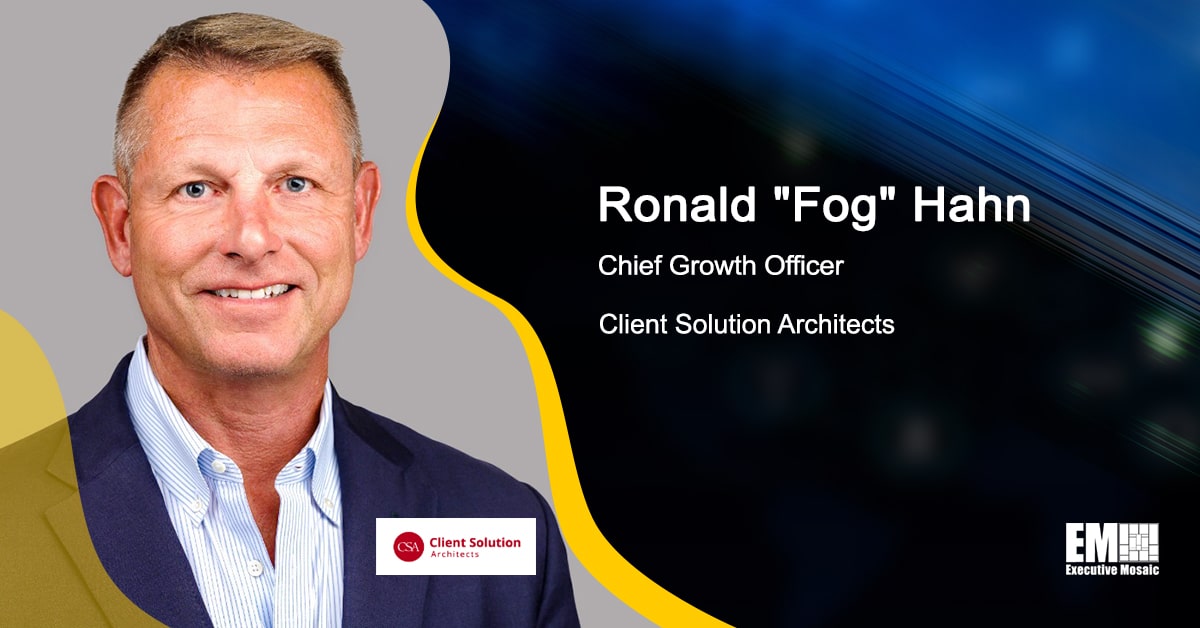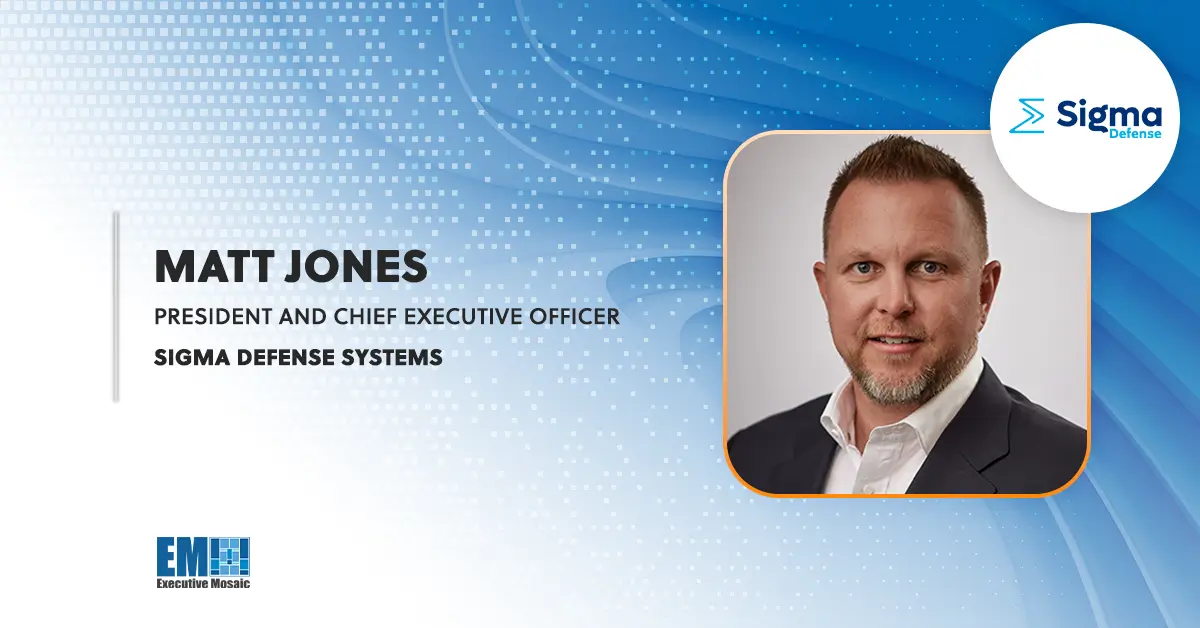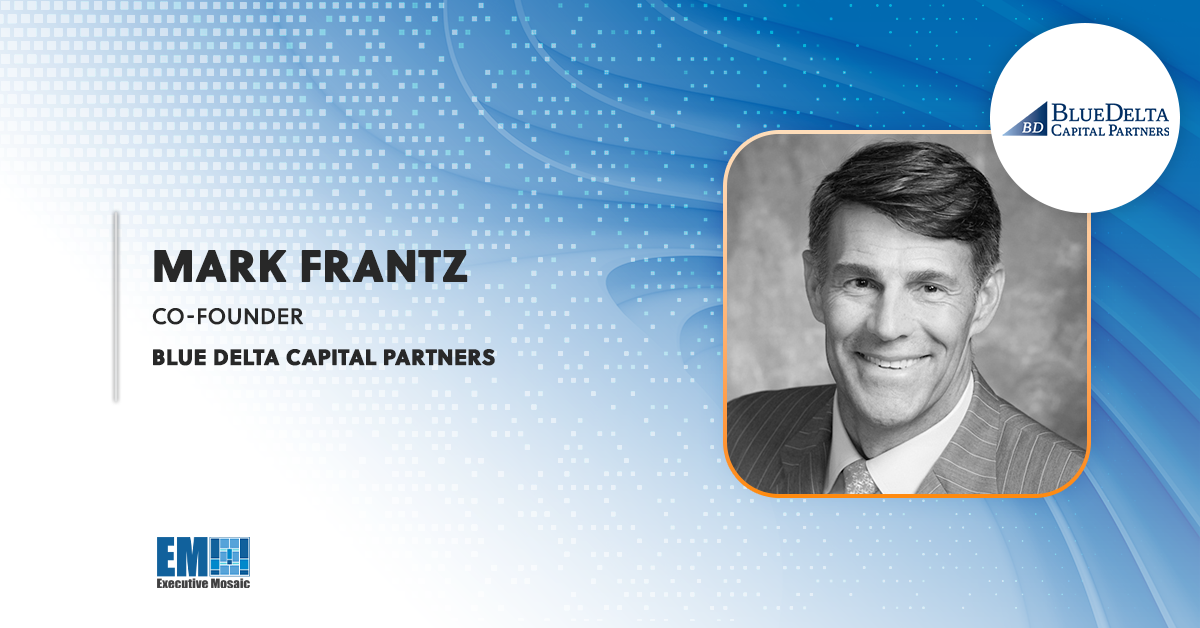There have been major shifts in the GovCon landscape in recent years; with the rise of remote work, the increase in M&A activity and the growing competitiveness of the sector, government contractors must be adaptable, agile and quick in order to stay ahead of the curve and grow their businesses.
To learn more about the latest GovCon trends, GovCon Wire spoke with Fog Hahn, who recently joined Client Solution Architects as chief growth officer. Hahn’s public sector career centered around electronic warfare and includes service in the Marine Corps, Air Force, Joint Staff and Joint Special Operations Command. In industry, Hahn served as strategic growth officer for Amentum and was responsible for M&A and business development efforts. Hahn’s prior roles include executive vice president of Critical Infrastructure Protection Strategies for AECOM.
Read below to get Fog Hahn’s thoughts on how electronic warfare is changing the modern defense landscape, the biggest mistakes companies can make in the bidding process and how he plans to steer CSA through its next phase of growth.
GovCon Wire: Congratulations on your new role as chief growth officer for Client Solution Architects! Why is this company the right fit for you, and what do you hope to accomplish in the role?
Fog Hahn: “There are really two things that attracted me to CSA. The first factor is the company’s really strong performance and superb CPARS (Contractor Performance Assessment Reporting System). The execution side of CSA is really good, and we’ve got a diverse portfolio of IDIQ vehicles. We’re on RS3, TSS2, Seaport-E NxG and more. Leveraging our breadth and depth of contract vehicles is one of the keys to growing a business today.
The second thing that attracted me to CSA is that it presents to me a unique challenge because it’s a company that’s in a transition period. We’re kind of in that adolescent period where you’re really not quite an adult, but you’re not a child anymore. We’re in that $100 to $110 million range where we now have to grow up and really compete with the big contractors out there like Booz Allen, SAIC, GDIT and others.
Given my background operating in the larger size category with Amentum, a $7+ billion company, I felt like this opportunity was the challenge I was looking for. CSA is really positioned to make that next leap, and it’s an exciting time for us at CSA.”
GCW: Tell me about your goals for driving CSA’s growth. Where are you seeing new opportunities for expansion in your time with the company thus far?
Hahn: “When I look at growth, I focus on three areas. The first bucket is cybersecurity. What we’re doing in cyber and Risk Management Framework across the Navy really allows us an opportunity to grow that business. It’s a requirement that nearly all federal agencies have a need for, and we’re looking to broaden that out outside of what we do with the Navy. This area is moving us into offensive and defensive cyber operations along with what we already do in RMF and information assurance.
The second area is IT modernization and cloud. We manage and maintain legacy systems, but then more importantly, we migrate those into more modern systems and then ultimately drive that into more cloud migration. I think IT is a great growth area for CSA.
The third area is the overall training pipeline. We’re already really big in the training environment with work that we do for the Army and JMSC. We’re building out our live, virtual and constructive multi-domain capability. What I’m seeing across all the services, and really with all the federal agencies, is a need to maximize every training dollar, which really becomes ‘How do we leverage what we do live virtually and constructively?’ I think we’re really well-positioned in the training market, and it’s a huge opportunity for us.
We’ve been performing exceptionally well across all three of these areas, and it has really opened up the door to look more broadly and take those capabilities to new client sets.”
GCW: Part of your CGO role includes competitive intelligence. What are some of the most significant trends or shifts you’re seeing in the GovCon market, and how does that inform your work at CSA?
Hahn: “There are some pretty significant trends I’ve seen, and the biggest one is really mergers and acquisitions. There’s a lot of M&A activity right now, but it has slowed slightly in the last six or seven months due to interest rates and a tighter constriction of the capital markets. But overall, across the Defense Industrial Base, there have been lots of acquisitions, particularly of smaller and medium sized companies, so that adds a lot of consolidation. I think that trend will probably continue and will open back up as the capital markets open back up. We’ll continue to see that consolidation driving significant changes in the competitive landscape as companies are constantly merging.
The other thing I’m seeing is competitive prices across the board. We live in a highly price competitive environment, but I think we’re seeing a shift away from LPTA, or lowest price technically acceptable, and really more toward the actual solutions and efficiencies that companies can provide to federal clients. Our clients are all looking for companies that can do more with less. So it’s not just about doing the same thing cheaper, it’s about doing things better, doing things more efficiently, and looking at ways that technology can drive down the government’s costs. I’m seeing that in areas like RPA, or robotic process automation. RPA allows us to automate capabilities and do work not only more efficiently and more effectively, but at a significantly lower cost and with fewer mistakes. I think that we’re seeing that shift in the solutioning side, and that’s a big push for us at CSA.
The last trend is just the competitiveness of the market and the challenge of getting talent. And that’s not just in the Defense Industrial Base, that really is a trend within the larger job market today. It’s just harder to find people. With the ‘great resignation,’ catalyzed by COVID, we’re all competing for the same people, and oftentimes with the same skill sets.
I think flexible work schedules and the ability to work remotely will continue to be a necessity. It’s something that was never even a factor in our market not long ago. I’ve been in the government space for 35 years, and prior to COVID, there was very little remote workforce. COVID really forced us into that space, and it showed us two things.
First, it showed the federal government, our clients, that we can do certain things remotely. We’re seeing that there are certain things that can be done remote, and certainly employees want the ability to work remote and have more flexibility to do things in their own lives.
And also as a workforce, we’re seeing that we can operate very effectively remotely, and it certainly brings down cost, especially with needing less office space.
Those are the major factors that I see in the market that are going to continue I think for the foreseeable future.”
GCW: You have extensive experience throughout your career working with the electromagnetic spectrum and electronic warfare. I’m curious to get your thoughts on EW, how it’s changing the defense landscape, and how you see government contractors responding.
Hahn: “Coming from an EA-6B Prowler background, and then running the Joint Electronic Warfare Center for five years, electronic warfare has certainly been the core of my government experience. What I’ve seen is that EW is really changing today because of how we operate and how we move data. Just think about your phone and how much data and computing capability that you have just inside your phone compared to where we were even just 10 years ago. All of that data is moving, and the demand for data has just exploded.
But even with weapons systems like the F-35 that can just handle immense amounts of data, all that data has got to move through the electromagnetic spectrum. We’re not going to have ships, planes and tanks with fiber optic cords behind them — the last mile is always going to be in a wireless environment. Maintaining control of that environment is paramount to your ability to be effective on the modern battlefield.
The electromagnetic spectrum is really now being thought of as a warfighting domain. When you look at air, land, sea, space and cyberspace, the electromagnetic spectrum is the connective tissue that links all the warfighting domains.
EW is really our offensive and defensive capability to protect the electromagnetic spectrum. We need to be able to be both protected for our use and be able to take it away and deny an adversary’s use. The challenge now is in the sophistication of everything moving to digital. We’re seeing a blurring between cybersecurity and electronic warfare and particularly electronic attacks. I think you’ll see those lines continue to blur in the future, particularly as we look at the importance of EW with near-peer competitors like China and Russia.
Overall, the linchpin in the modern battlefield is that ability to gain and maintain control of the electromagnetic spectrum. We’re seeing that in weapons platforms and driving requirements and for electromagnetic protection and cybersecurity. We’re going to need to be able to gain and maintain access to our data because with all of our modern weapons systems and our modern soldiers, the demand for data is just huge.”
GCW: How do you set your priorities around limited capture dollars? What goes into your decision making process around what contracts to go after?
Hahn: “I think that’s really the most important role of any chief growth officer. Even at big companies, we never have an unlimited budget for our bids and proposals.
First, you have to understand where it is you’re trying to take the company. The one mistake that I’ve seen in my time in industry is that it’s very easy to chase opportunity and not necessarily understand where that opportunity is going to take you. To me, it really has to be focused from the top down, meaning we have to set our vision. Where do we want to be in that seven to ten year mark as a company?
Then, we set a strategy to determine the path that’s going to get us to where we want to go. Then, we build our mission and our objectives. If you don’t do that up top and then stay disciplined to that process, it’s very easy to get sidetracked with bidding. Particularly for companies of our size that are in that transitory state, you really have to be disciplined in that process. So that requires identifying opportunities early and then making your bid or no bid decisions much earlier in the process.
I’m looking at what we’re going to go after and match it up against our strategy. What’s our vision? Is this going to advance us in that direction? And if it’s not, then there really has to be some kind of justification as to why we’re bidding this.”






